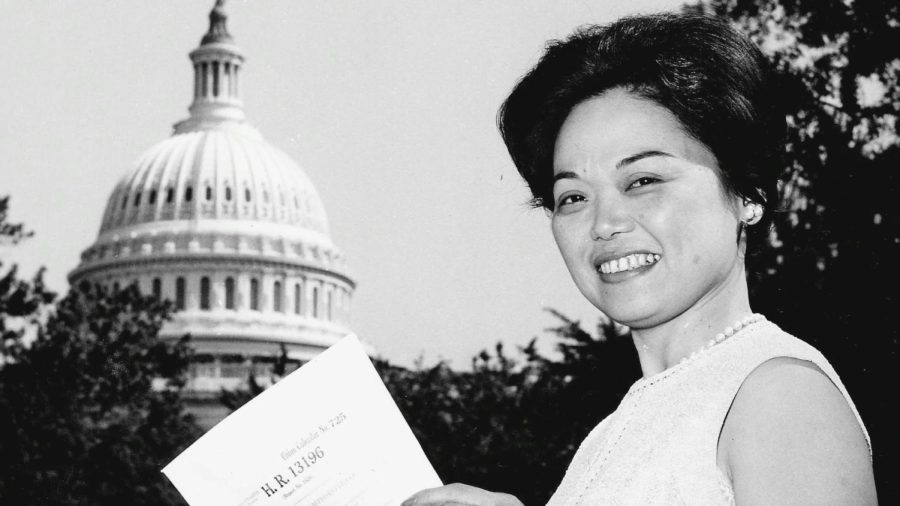Women Hidden in History: Patsy Mink
Patsy Mink was a fierce advocate for equality and women’s rights.
November 17, 2022
Patsy Takemoto Mink was born in Paia, Hawaii territory, on December 6, 1927 to Mitama Tateyama Takemoto and Suematsu Takemoto as one of 2 children. After she graduated in 1944, she went on to go to Wilson College in Chambersburg, Pennsylvania and University of Nebraska at Lincoln, graduating with a degree in zoology and chemistry from the University of Hawaii. Mink went on to go to University of Chicago Law after being denied by 3 nursing schools.
Patsy married John Mink and went on to have one daughter, Gwendolyn, before moving to Honolulu. Sadly, Mink was forced to go into private practice due to the discrimination against her interracial marriage. Despite this, in 1954, Mink founded the Oahu Young Democrats and worked as an attorney for the territorial house of representatives in 1955. She went on to win the election for the chamber in 1956 and served until 1958, then won a seat in the territorial senate in 1958 and served till ‘59.
Mink left politics in 1959 due to losing the vote to Daniel Ken Inouye, one of John Anthony Burns’ proteges, but returned in 1962 winning a seat in the Hawaii state senate and served from 1962 to 1964. In 1964 Patsy began her fight to win a seat in the U.S house for Hawaii. She fought many battles, being beaten out by men and women alike, until finally, in 1970, she ran completely unopposed.
In 1972 she won 53% of the vote and in 1974 won 63% of the vote.
Mink focused on national issues, especially those affecting Asian Pacific Americans and the Pacific regions. She supported the economic and political development of the pacific islands and fought for family reunification provisions in multiple proposed immigration reform bills.
Mink was a massive advocate for women’s issues in congress, her biggest win being the Women’s Educational Equality Act, providing 30 million dollars for programs to help promote gender equality in school, increase educational and job opportunities for women, and to remove gender stereotypes from books and school curriculum.
The Oregon Democrats recognized her work and asked her to run for the presidential election in 1972. Mink agreed but sadly lost, but stayed in politics, becoming the president of the Americans for Democratic Action and Assistant Secretary of State for Oceans and International Environmental and Scientific Affairs.
In 1990, Mink was reelected to Congress and served six terms in the House of Representatives. Unfortunately in August of 2002, Mink was hospitalized with pneumonia before passing away a month later in Honolulu, Hawaii; however, her name was still on the November election ballot and she won by a significant margin. Sadly, she was unable to fill the position due to her untimely death and was replaced by Ed Case, her runner up.
After her death the Title IX law was renamed the Patsy T. Mink Equal Opportunity in Education Act. Patsy Mink left behind a massive legacy of activism for equality and women’s rights. Her daughter, Gwendolyn Mink, went on to follow her mothers footsteps and involve herself in politics and is still involved to this day.












